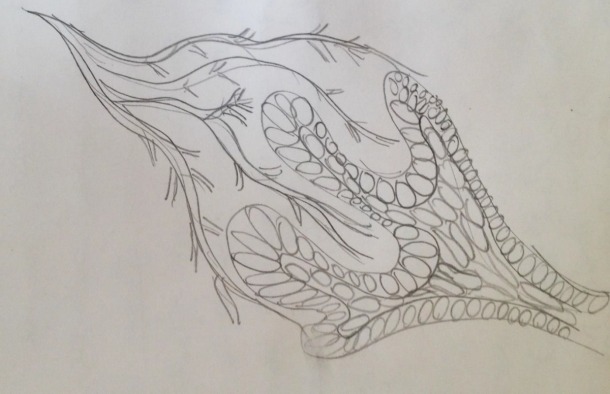
Tidal Cornucopia 〈潮之豐饒角〉
Elaine Clocherty 伊蓮.克洛赫堤
澳大利亞 Australia
泥土、稻草、石、現地自然素材
Mud, straws, stones, on-site natural materials
藝術家讀到兩篇報導,一是關於臺灣東北「海女」採集石花菜;另一篇則談論重金屬污染被水筆仔吸收累積進而影響食物鏈中如招潮蟹等眾多生物。兩則故事都與水所支撐的食物供給有關。因此這件作品發想自這兩種代表植物,藉此來詮釋淡水河系的感潮屬性,以及當今水資源面臨高濃度毒性物質累積的危機。
以猶如在顯微鏡視野下的微觀角度來呈現水筆仔,另外則用鳥瞰的巨觀角度來描繪石花菜,將這兩種意象混合排列象徵河海交會。此件作品探討河川系統深受毒害的現況,同時彰顯原本河水猶如豐饒之角般能蘊含的多樣性與食物供給量,期望引發人們為恢復如此盛況展開行動。
Artist has read a newspaper article from the Taipei times about ‘sea women’ who would harvest the gelidium seaweed during low fishing season and a second article explaining how the heavy metals are being absorbed, accumulated in Kandelia obovata and further transferred to the food chain through deposit feeders such as the local fiddler crabs. Both stories relate to the water systems and their capacity to provide food.
The work uses the properties of the plants K. obovata from the Guandu wetland and gelidium seaweed from the sea to explore the tidal aspects of the Tamsui river system and the effects of the high toxicity levels in the rivers on the food chain. Visually a microscopic view of an abundant mangrove species K. obovata and a bird’s-eye view of the gelidium seaweed are combined together to represent the mixing of the river and sea waters. This work explores both the reality of the toxicity of the river system as well as the rivers’ beauty, diversity and capacity to become a healthy food cornucopia again.